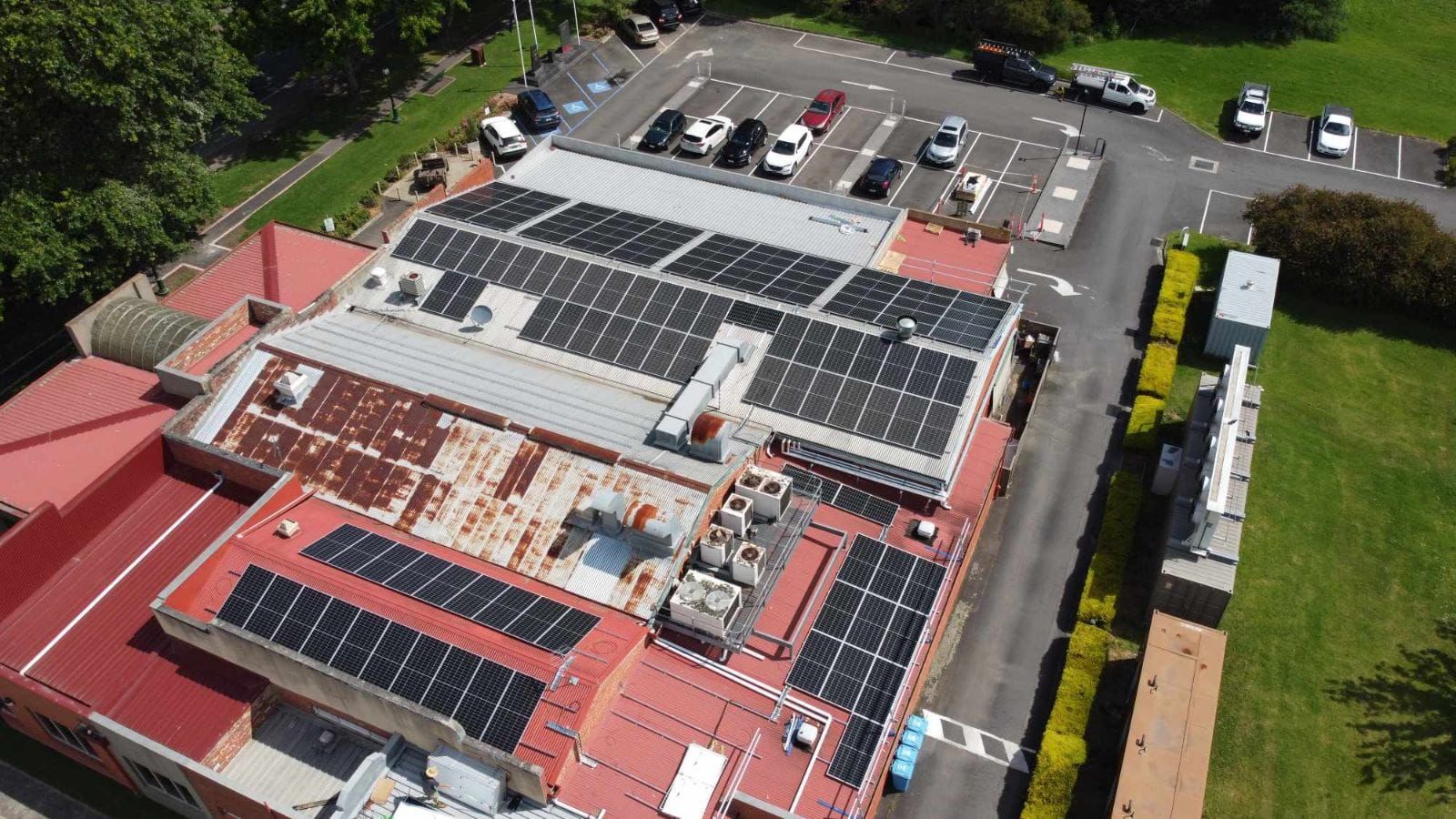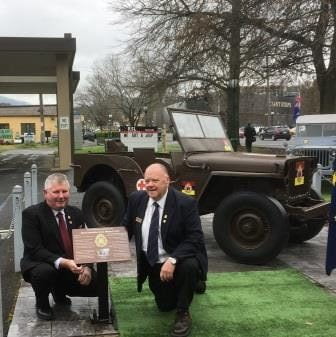Healesville RSL Goes Solar: Shining a Light on Sustainability and Savings
The Healesville RSL is proud to announce a giant leap forward in environmental responsibility and financial sustainability! In April 2023 we secured a grant through the Veterans Capital Works Program and the Victorian Government to help install a whopping 93.5-kilowatt solar power system on our roof. This exciting development will not only benefit the RSL itself but also contribute positively to the Healesville community.
Sun Power for a Sustainable Future
Our new solar system is a significant investment in renewable energy. Here’s what it means for the environment:
- Reduced Carbon Footprint: By generating our own clean energy, the RSL will significantly reduce its reliance on the fossil fuel grid. This translates to a smaller carbon footprint and a positive impact on combating climate change.
- Leading by Example: The RSL’s commitment to solar power sends a strong message to the Healesville community about the importance of sustainability. We encourages residents and businesses to explore renewable energy options for their own properties.
Financial Savings and Long-Term Security
The installation of the solar system will bring numerous financial advantages to the RSL:
- Lower Energy Bills: The solar panels will generate a substantial portion of the RSL’s electricity needs. This translates to significant savings on our monthly energy bills, freeing up valuable funds to be directed back into our services and facilities.
- Energy Price Stability: Australia’s energy market has been volatile. Solar power provides a hedge against rising electricity costs, ensuring greater financial stability for the RSL in the long run.
Benefits for the Healesville Community
The RSL’s solar initiative extends beyond our walls and benefits the entire Healesville community:
- Promoting Sustainability: The RSL’s visible commitment to solar power serves as a powerful symbol of our collective responsibility for environmental well-being. It fosters a culture of sustainability within Healesville, encouraging others to consider renewable energy solutions.
The Healesville RSL is thrilled to embark on this exciting journey towards a sustainable future. We are confident that this initiative will not only benefit the RSL itself but also contribute meaningfully to a greener and more prosperous Healesville.

75-year-old war jeep rises from ashes
Reprinted: Mail Newspapers – Mountain Views Kath Gannaway
A World War II jeep has risen from the ashes of Black Saturday to stand as a tribute to the Royal Australian Army Medical Corps (RAAMC) and to the former School of Army Health, Healesville.
The journey of the Willys Jeep from the manufacture in America in 1942 to its new home at Healesville RSL was revealed during a dedication ceremony on Saturday, 9 September.
Along with the story of the jeep, the history of the School of Army Health which was located at Summerleigh Lodge in Albert Road from 1951 to 1986, was detailed by RAAMC Association Victoria president Paul Terawskij.
Former members of the RAAMC and family members gathered for the dedication, joined by representatives of federal, state and local government, RSL Victoria, Healesville RSL, the Victorian Men’s Shed Association, Badger Creek Men’s Shed, Badger Creek CFA, Healesville Rotary Club and the Victorian Military Vehicle Corps.
Healesville RSL Commemorations officer Bob Gannaway gave a brief history of the project, saying the RSL purchased the jeep which had been burnt out at Kinglake in the 2009 bushfires with the aim of restoring it as a static display.
After service with the RAAF during the war, the Willys Jeep was sold around the late 1950s to early 1960s and converted to right-hand drive for road use.
It was later sold to a museum and stored at Kinglake awaiting restoration when the fires came through.
The chassis was restored by Healesville Rotary Club in 2012 as part of the Car Torque program, but put on hold when the program ceased in 2013.
Enter Badger Creek and District Men’s Shed. In 2016, Rotary donated the dismantled jeep and tools, to the shed where some of the members, led by Peter Broman set about a full restoration.
It was a labour of love for the team which included Peter Froud, Ron Closter, John Larsen and John Thompson.
The six-month restoration maintained the character and history of the jeep by leaving many of its battle scars and a patch of the original green colour visible on the fire wall.
The addition of Red Cross ambulance decals pays tribute to the RAAMC and Healesville’s military history as home to the School of Army Health, Healesville.
Mr Terawskij said after WWII it was recognised that there was a need to establish a Corps School in a new location to provide co-ordinated health service training for the regular and reserve components of the army.
“The location needed to be a suitable, healthy and attractive site, which could provide adequate training facilities and basic accommodation as well as access to suitable training areas,” he explained.
Summerleigh Lodge, a large 1920s guest house was chosen for all those reasons and handed over on 1 December, 1951. In 1983, the School of Army Health was officially named Norris Barracks in honour of Major General Sir Frank Kingsley Norris.
“The School of Army Health, during its 35-year presence in Healesville, established and maintained an excellent relationship with the people of Healesville and surrounding areas,” Mr Terawskij said.
He said that relationship continued with ex RAAMC personnel still residing in the district.
“We still treat Healesville as the home of the Corps as there are literally hundreds of personnel that at some point of their career, either served at the school or attended training there,” he said.
“There are many fond memories of the area.
“Thank you to the people of Healesville.”
Healeville RSL president, Brian Luscombe, is one of those former RAAMC personnel, and together with Mr Terawskij he had the honour of unveiling a plaque, detailing the history of both the symbolic jeep and the School of Army Health, Healesville.
